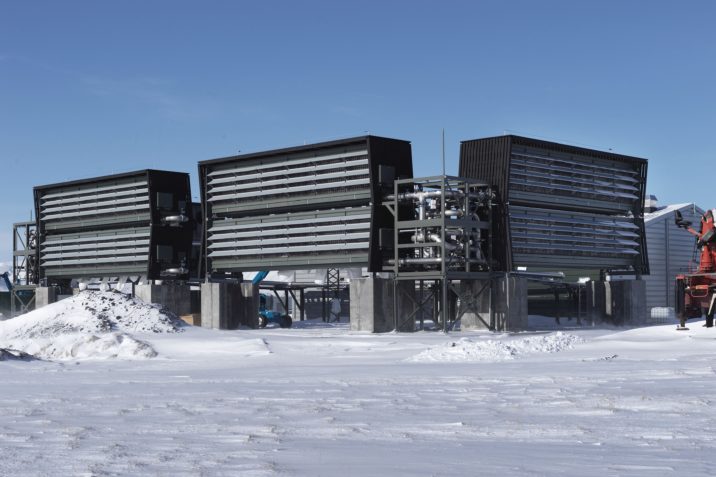
Private equity investors are showing a strong appetite for carbon capture companies. Warburg Pincus and Partners Group have each led funding rounds for carbon capture companies in the last week.
Partners Group, investing through its impact fund, PG Life, and individual mandate accounts, was joined by Singaporean sovereign wealth fund GIC, Swiss Re, Baillie Gifford and M&G, Carbon Removal Partners and Global Founders Capital to invest in Climeworks, a Swiss company specialising in direct air capture.
Warburg Pincus was joined by the Heritage Group in a $50 million funding round for ClimeCo, a US-headquartered carbon abatement and management company that provides nature-based solutions and plans to expand into engineered carbon capture and sequestration.
Partners Group “aims to capitalise on attractive thematic investing tailwinds into carbon management”, a spokesperson for the firm tells New Private Markets. “Carbon removal technologies [play] a critical role in achieving long-term global emission reduction targets.” That means some companies and governments will soon be buying carbon offsets and credits en masse to meet their net-zero targets.
“To mitigate the risks of climate change, the world needs to scale up carbon removal on top of, not instead of emission reductions,” said Swiss Re group chief executive Christian Mumenthaler last year, when the insurance company signed a 10-year purchase agreement with Climeworks.
Climeworks’ method is ‘direct air capture’: a new technology that extracts carbon from the air, mixes it with water and funnels it underground, where the solution turns into geological formations and forms part of underground rock. Companies such as Microsoft, Swiss Re – also an investor – Stripe and Boston Consulting Group are among its clients, Climeworks’ chief financial officer, Andreas Aepli, tells New Private Markets. Climeworks opened Orca, “the world’s first large-scale carbon dioxide removal plant”, according to the company’s website, in Iceland in 2021.
Orca can capture up to 4,000 tons of carbon dioxide a year. For comparison, one passenger on a return flight from London to New York is responsible for 1.2 tonnes of carbon emissions, travelnav.com reports.
But Climeworks has plans to scale “10x, 100x, 1000x” within the next decade, Aepli said. It will build a direct air capture facility named Mammoth that can capture up to 40,000 tons per year, and then facilities that can capture 400,000 tons and 4 million tons per year.
“It’s always still a challenge to scale that up – you don’t just need to scale the technology; you also need to scale the financing and the market. It’s a big challenge. What gives us courage is that other people have managed to do this before in other industries.”
Climeworks is not yet generating a profit, but Aepli expects it will become profitable this decade.
Nature-based alternatives
Direct air capture – an engineered carbon capture and sequestration solution – is just one method of offsetting carbon emissions. It has drawn criticism for offering a solution that may allow companies and governments to avoid reducing carbon emissions generated by their operations. And DAC is often seen as a less preferable alternative to nature-based solutions – using nature to capture carbon, such as through preserving forestry and oceans. Nature-based solutions typically do more than DAC to protect biodiversity.
Could Climeworks’ scaling be inhibited by the risk of regulatory restrictions on DAC technologies, or if carbon offset buyers prefer nature-based solutions? “I don’t see that risk as very high,” says Aepli. “The biggest risk is that people start to issue low-quality or fake removal certificates. We think there will be government action that regulates which certificates are allowed to be sold on the market, and some quality control. We are very confident that we’ll pass the quality control.”
Another company, ClimeCo, is planning its first foray into engineered carbon capture and sequestration with the $50 million it has received from Warburg Pincus, the Heritage Group and other investors. It will also scale up its existing nature-based solutions and carbon abatement and management solutions.
“Industrial carbon abatement, nature-based solutions and carbon capture and sequestration are all going to be really important areas of growth,” Jeff Luse, energy investments principal at Warburg Pincus, tells New Private Markets. “With that said, it is hard to predict exactly which ones are going to grow the fastest. The market continues to evolve and it’s still very unclear exactly which direction it’s going to evolve towards.”
ClimeCo’s exposure to multiple aspects of the carbon management market “and an ability to be a leader in any one of these areas is exactly what excites us”, says Luse. “It really sets up multiple ways to be successful at the company and multiple ways for the investment to be successful.” Luse has joined ClimeCo’s board of directors following Warburg Pincus’s investment in the company.
Symbolic investors
Meanwhile, Verdane, an Oslo-headquartered private equity firm, invested in DAC company Heirloom’s $53 million Series A funding round in March, the firm tells New Private Markets. The investment was made from Verdane’s charitable foundation. “We invested because we really believe in that technology,” Axel Elmqvist, Verdane’s sustainability lead, tells New Private Markets. “It’s not a commercial investment,” Bjarne Kveim Lie, Verdane’s chief investment officer, adds. “It’s almost symbolic, to show support.”
Verdane has signed 10-year contracts with Climeworks, Heirloom and Neustark – which stores carbon dioxide from agriculture in concrete – to offset the carbon footprint of the firm’s operations, the firm announced last week. “The catalytic effect is more as a customer. We want to be catalytic, early customers for an important technology,” said Kveim Lie. “Carbon capture is an immature technology that we are helping to bring to maturity by effectively paying a lot for our CO2.”






 If you do not receive this within five minutes, please try to sign in again. If the problem persists, please email:
If you do not receive this within five minutes, please try to sign in again. If the problem persists, please email: